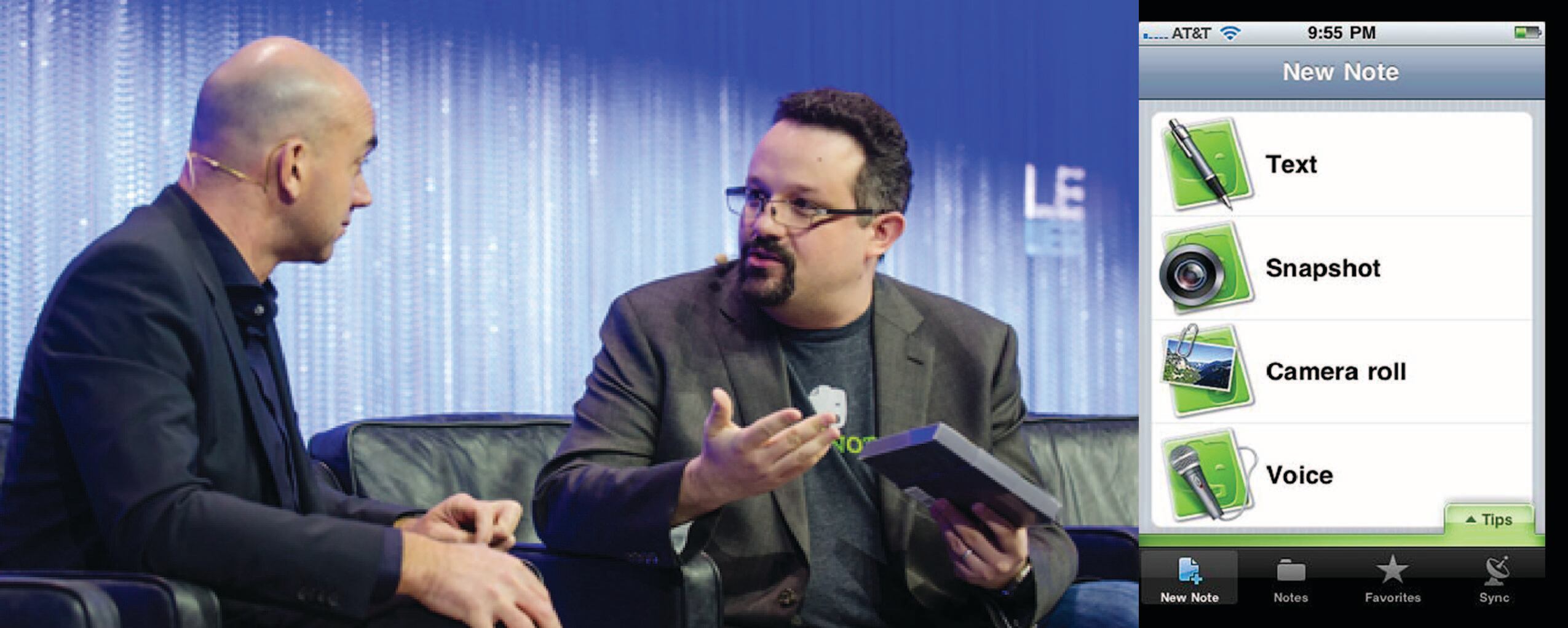1. The Entrepreneurial Perspective

Chapter Outline
1.1 Entrepreneurship Today
1.2 Entrepreneurial Vision and Goals
1.3The Entrepreneurial Mindset
Introduction
Phil Libin, cofounder and former CEO of Evernote, once said there are “lots of bad reasons to start a company. But there’s only one good, legitimate reason . . . it’s to change the world.”[1] Evernote is an example of an entrepreneurial startup. Its goal is to make our lives more organized and increase our personal memory abilities by storing necessary and desired information on the Evernote app. Evernote is designed to capture information through note taking (including pictures, web pages, drawings, and even audio), track and organize this material, and then save and archive the information. Evernote Corporation describes itself as “not only an organization, rather it is a family of professionals who are creative, innovative and experienced in their respective fields.”[2]
Around the globe, individuals, communities, and organizations advocate for and support the entrepreneurship movement. Many colleges and universities offer courses, degrees, and competitions for entrepreneurship teams. Communities provide support through services such as incubators that foster planning and startup activities. Organizations like UNESCO’s Global Action Programme on Education for Sustainable Development holds a Youth Entrepreneurship Competition annually.[3] That is where student Chloe Huang, in 2017, submitted her idea for an algae energy pavilion to the Education for Sustainable Development competition. Huang recognized the problem of lakes suffering from oversaturation of algae and saw a solution in converting the algae into a biofuel, creating green energy while alleviating an environmental problem.[4]
In the examples of both Libin and Huang, the entrepreneurial products focus on the use of technology and improving life, but they also represent two vastly different approaches to entrepreneurship. Libin’s focus was on improving quality of life by allowing users to track and organize information in their business and personal lives, whereas Huang focused on a global environmental issue to sustainably improve water quality. Each idea solves a problem that many people might not even have noticed. Becoming aware of problems that need to be solved, then solving the problem to make our lives easier or better, is part of the entrepreneurial perspective.
- Robin Wauters. “Evernote CEO Phil Libin: ‘My Advice to Aspiring Entrepreneurs? Don’t Do It.’” The Next Web. April 27, 2012. https://thenextweb.com/video/2012/04/27/evernote-ceo-phil-libin-my-advice-to-aspiring-entrepreneurs-dont-do-it-video/ ↵
- “Evernote SuccessStory.” SuccessStory. June 24, 2018. https://successstory.com/products/evernote ↵
- UNESCO. “Global Action Programme on Education for Sustainable Development.” n.d. https://en.unesco.org/gap ↵
- Chloe Huang. “Algae Energy Pavilion.” Entrepreneurship Campus. August 1, 2017. https://www.entrepreneurship-campus.org/ideas/14/7404/ ↵

